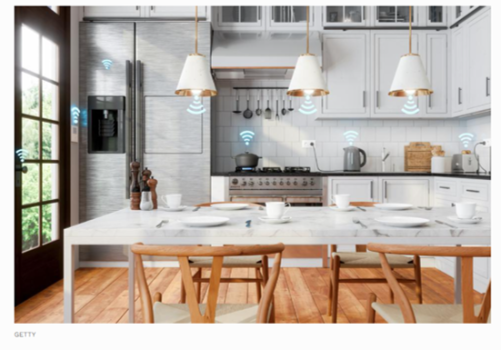K
Kathleen Martin
Guest
With the explosion of the Internet of Things, consumers have access to everything from smartphones to smart fridges. These interconnected devices may make life more convenient—but they may also leave users more vulnerable to security issues.
As new smart technologies enable data to move more freely across networks and devices, users must be equally smart about how they defend their data against hackers. Below, 11 Forbes Technology Council members share their top IoT cybersecurity tips for everyday consumers. Follow their advice to ensure you are keeping your devices—and yourself—as protected as possible.
1. Research Before Buying
Ask yourself: Do you need a connected fridge, dishwasher or toothbrush? Review the product before you buy in terms of what security controls it has. Lots of IoT products are cheap and don’t include robust security. Insecure IoT devices can lead to malware or criminals breaching your home Wi-Fi, and it’s not uncommon for domestic Wi-Fi routers to have security issues, exposing insecure IoT devices to malicious actors. - Eoin Keary, Edgescan
2. Customize Security Settings
Unencrypted IoT device traffic and limited data control increase the risk of exposing personally identifiable information, giving threat actors access to unencrypted network data that can be sold and used in future attacks. Customize security settings, update your devices regularly, encrypt your personal wireless network and use strong, unique passwords with multifactor authentication. - Alejandro Romero, Constella Intelligence
3. Update Firmware
Your security is only as strong as your weakest link. Many hacks occur through smart locks and printers, so always make sure to update your firmware. You may also want to consider setting up one network for smart devices and a separate network for PCs, tablets and phones. - Carl Hung, Season Group
4. Set Up A Separate Wi-Fi Network
Many of these systems have simple or no built-in security considerations. Information sharing with the devices should be on an as-needed basis; avoid putting any sensitive personal information on them. If possible, set up a separate Wi-Fi network for IoT devices so if they’re compromised, it doesn’t put other systems at risk. Added security can be achieved by turning this into a security zone. - Tim Liu, Hillstone Networks
Continue reading: https://www.forbes.com/sites/forbestechcouncil/2022/02/10/11-iot-cybersecurity-tips-to-help-consumers-protect-themselves-from-hackers/?sh=5b02dd6a6a94
As new smart technologies enable data to move more freely across networks and devices, users must be equally smart about how they defend their data against hackers. Below, 11 Forbes Technology Council members share their top IoT cybersecurity tips for everyday consumers. Follow their advice to ensure you are keeping your devices—and yourself—as protected as possible.
1. Research Before Buying
Ask yourself: Do you need a connected fridge, dishwasher or toothbrush? Review the product before you buy in terms of what security controls it has. Lots of IoT products are cheap and don’t include robust security. Insecure IoT devices can lead to malware or criminals breaching your home Wi-Fi, and it’s not uncommon for domestic Wi-Fi routers to have security issues, exposing insecure IoT devices to malicious actors. - Eoin Keary, Edgescan
2. Customize Security Settings
Unencrypted IoT device traffic and limited data control increase the risk of exposing personally identifiable information, giving threat actors access to unencrypted network data that can be sold and used in future attacks. Customize security settings, update your devices regularly, encrypt your personal wireless network and use strong, unique passwords with multifactor authentication. - Alejandro Romero, Constella Intelligence
3. Update Firmware
Your security is only as strong as your weakest link. Many hacks occur through smart locks and printers, so always make sure to update your firmware. You may also want to consider setting up one network for smart devices and a separate network for PCs, tablets and phones. - Carl Hung, Season Group
4. Set Up A Separate Wi-Fi Network
Many of these systems have simple or no built-in security considerations. Information sharing with the devices should be on an as-needed basis; avoid putting any sensitive personal information on them. If possible, set up a separate Wi-Fi network for IoT devices so if they’re compromised, it doesn’t put other systems at risk. Added security can be achieved by turning this into a security zone. - Tim Liu, Hillstone Networks
Continue reading: https://www.forbes.com/sites/forbestechcouncil/2022/02/10/11-iot-cybersecurity-tips-to-help-consumers-protect-themselves-from-hackers/?sh=5b02dd6a6a94

